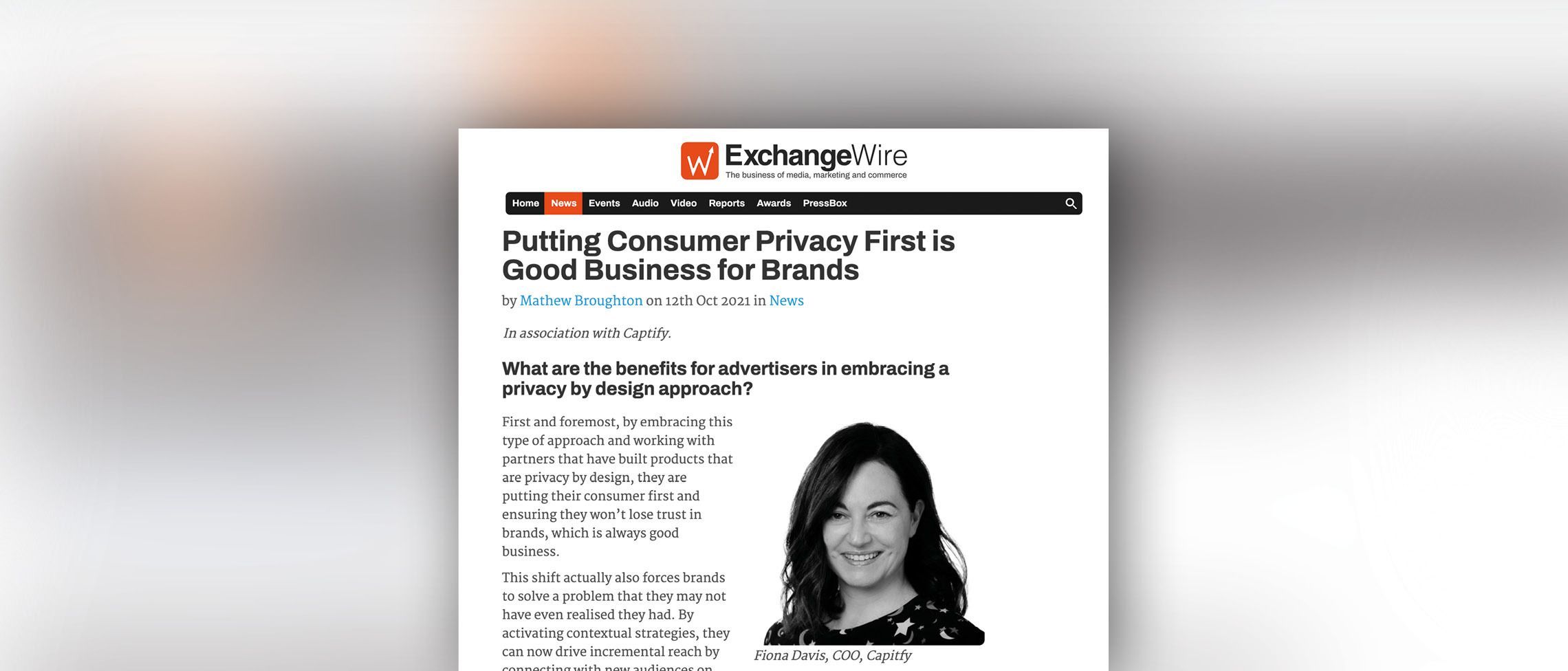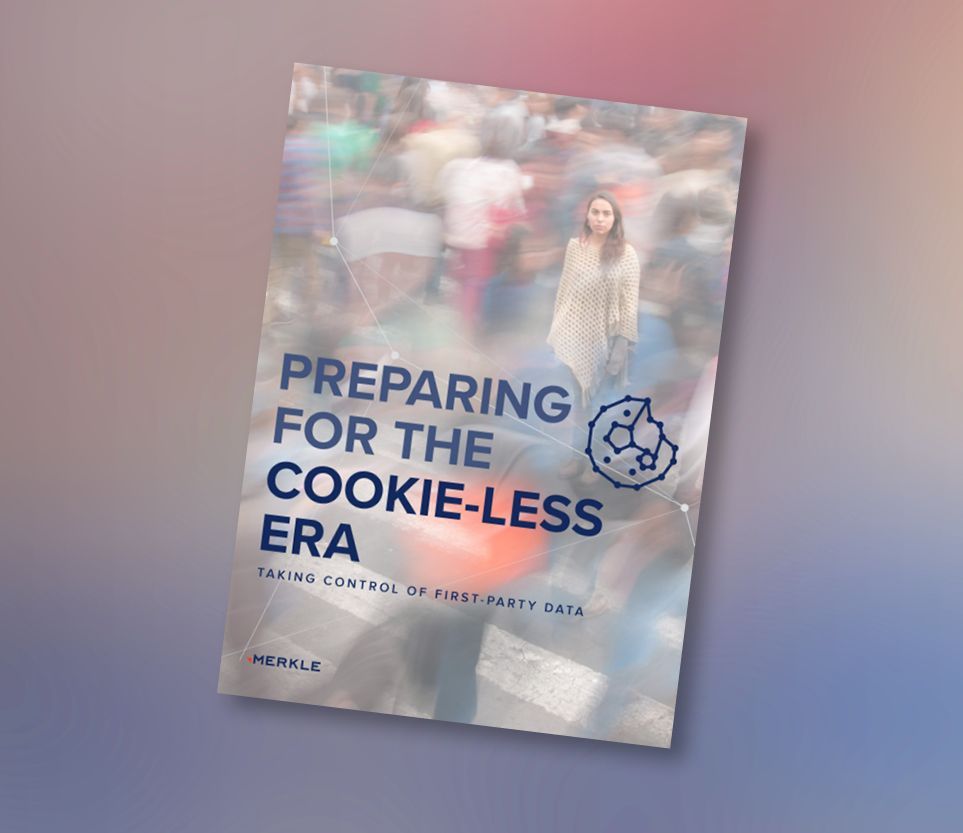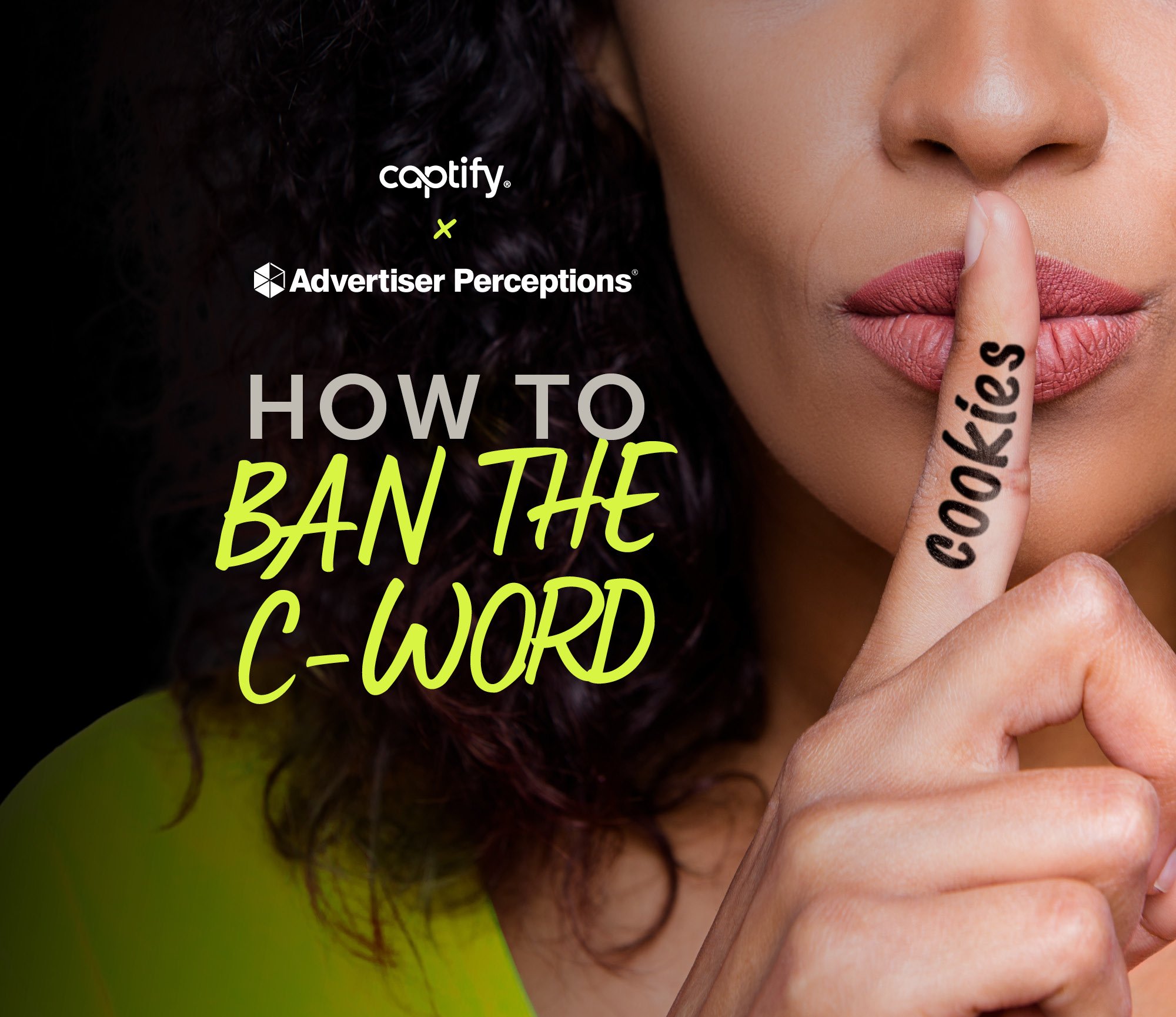ExchangeWire: Captify’s COO, Fiona Davis—Putting Consumer Privacy First is Good Business for Brands
Extracted from ExchangeWire, author Mathew Broughton
In this exclusive interview with ExchangeWire ahead of ATS London 2021, Fiona Davis, COO, Captify, details how a search-powered contextual approach can promote a better experience for the consumer in the privacy-first landscape.
How has the impending elimination of the third-party cookie revitalised the contextual advertising landscape and what new innovations has it led to?
For years when we’ve considered the role of contextual in advertisers’ strategies, we’d think about a brand safety tactic that eliminates risk from campaigns, not a driver of performance. Now, as we say goodbye to the cookie, we are witnessing innovations in data and tech powering a complete transformation of the contextual ecosystem and what it is capable of, so much so that performance is better than cookie-based products.
Next-gen contextual providers are looking beyond page content at other types of signals to gain a deeper understanding of audience intent, which helps to more accurately predict what pages audiences are most likely to consume and topics audiences are likely to be interested in. For example, search, e-commerce or purchase data, give a much more nuanced view of not just the page someone is on, but what they did before and after.
These latest advancements are also built to be future-proofed for a world that doesn’t support identity-based activations. By using intent instead, advertisers actually achieve a much greater level of relevance, as the same person may display different intent depending on context and other signals not captured by identity.
What are the benefits for advertisers in embracing a privacy by design approach?
First and foremost, by embracing this type of approach and working with partners that have built products that are privacy by design, they are putting their consumers first and ensuring they won’t lose trust in brands, which is always good business.
This shift actually also forces brands to solve a problem that they may not have even realised they had. By activating contextual strategies, they can now drive incremental reach by connecting with new audiences on browsers that haven’t supported the cookie in years.
A third benefit that is not immediately obvious is the reach of better quality inventory. Typically with a contextual activation, an advertiser will have defined all of their brand safety parameters upfront, meaning they are qualifying campaign reach based on brand safety needs, ad viewability targets, etc. ahead of time. With a contextual approach, buyers can see a more defined audience reach right away in addition to delivering ads in better quality inventory, which leads to better performance, higher viewability rates and a better understanding of price upfront.
How does search-powered contextual advertising improve results for both marketers and publishers? What additional insights can be drawn from search-powered contextual?
By combining page context with search intent, advertisers can determine consumers’ interests, wants needs, and provide a better prediction of what content they will consume and intent signals they will be displaying in the future. This unique combination allows them to access highly relevant audiences at scale, for relevant business goals or campaign outcomes, while still prioritising a safe experience for the end consumer.
It’s been really exciting—our latest results show 44% better performance for brand campaigns vs standard contextual solutions, 25% better performance for brand campaigns versus cookie-based solutions, and a 5% increase in viewability vs cookie-based solutions. There’s such huge potential and this is just the beginning. As we iterate and tune the product, we expect performance to improve further.
This has been hugely beneficial for publishers as well because it has led to increased monetisation opportunities due to incremental reach through cookieless activations.
Both advertisers and publishers can see the same level of insight into where their campaigns are serving, but also access search-powered insights across macro, market, brand, and audience level trends. Additionally, they can see what content is resonating with audiences and what is getting the highest attention, allowing them to determine with confidence where the best environments are to place ads in the future and what kind of content to create.
Likewise, how can contextual advertising promote a better experience for the consumer?
It’s ultimately the most privacy-friendly advertising method because advertisers are not tracking the consumer on an individual level — they’re targeting the ad based on the context of the page that they are landing on and all of the intent signals that would indicate someone is likely to be consuming that content. This way, consumers can be served with ads that are relevant to them while also maintaining their data privacy.
Before programmatic was even born, publishers and advertisers would deliver ads to content categories effectively targeting users at a broader contextual level—which was incredibly effective at that time.
How are results from search-powered contextual quantified? What education is needed across the industry on proving the value of contextual advertising?
Advertisers will continue to look to maintain measurements of business success, which inform investment into advertising, i.e. awareness, brand lift, purchase intent, customer acquisition, and net new customers. The optimisation against digital metrics such as CTR, VTR, CPL, etc., will remain, but the main thing that will change in a cookieless contextual world is the inability to track users cross-site. This change has led to the evolution of the types of metrics that advertisers are using, such as share of search. This shift will enrich existing measurement frameworks, leading to better brand tracking and attention metrics.
The global industry needs to be more educated on how quickly the legislation is truly changing. Depending on the region, many think we will just move to an ID-based approach once the cookie is gone, but if you look at the intent of the legislation, it is to stop consumers from being tracked across site, which an ID-based approach still allows. Legislators and industry bodies will keep pushing this agenda until it is properly addressed by the ad tech industry. Contextual advertising is one of the few solutions that will still work effectively without an ID.
Captify will be on stage at ATS London 2021, to be held on 3rd-4th November at Lee Valley VeloPark. Further information and tickets are available via the dedicated events platform.



